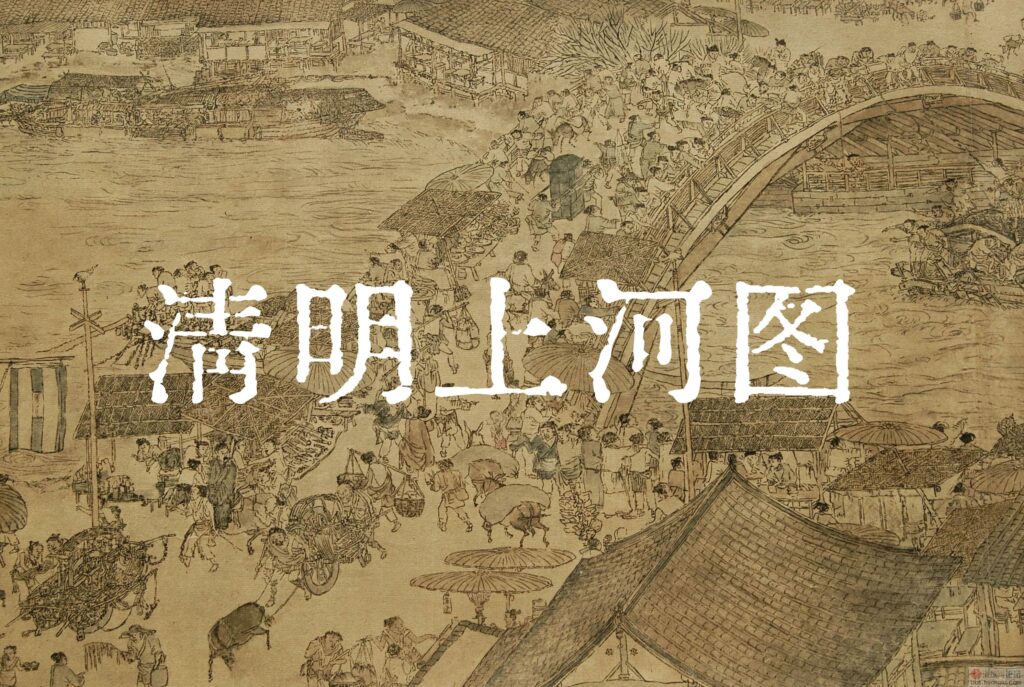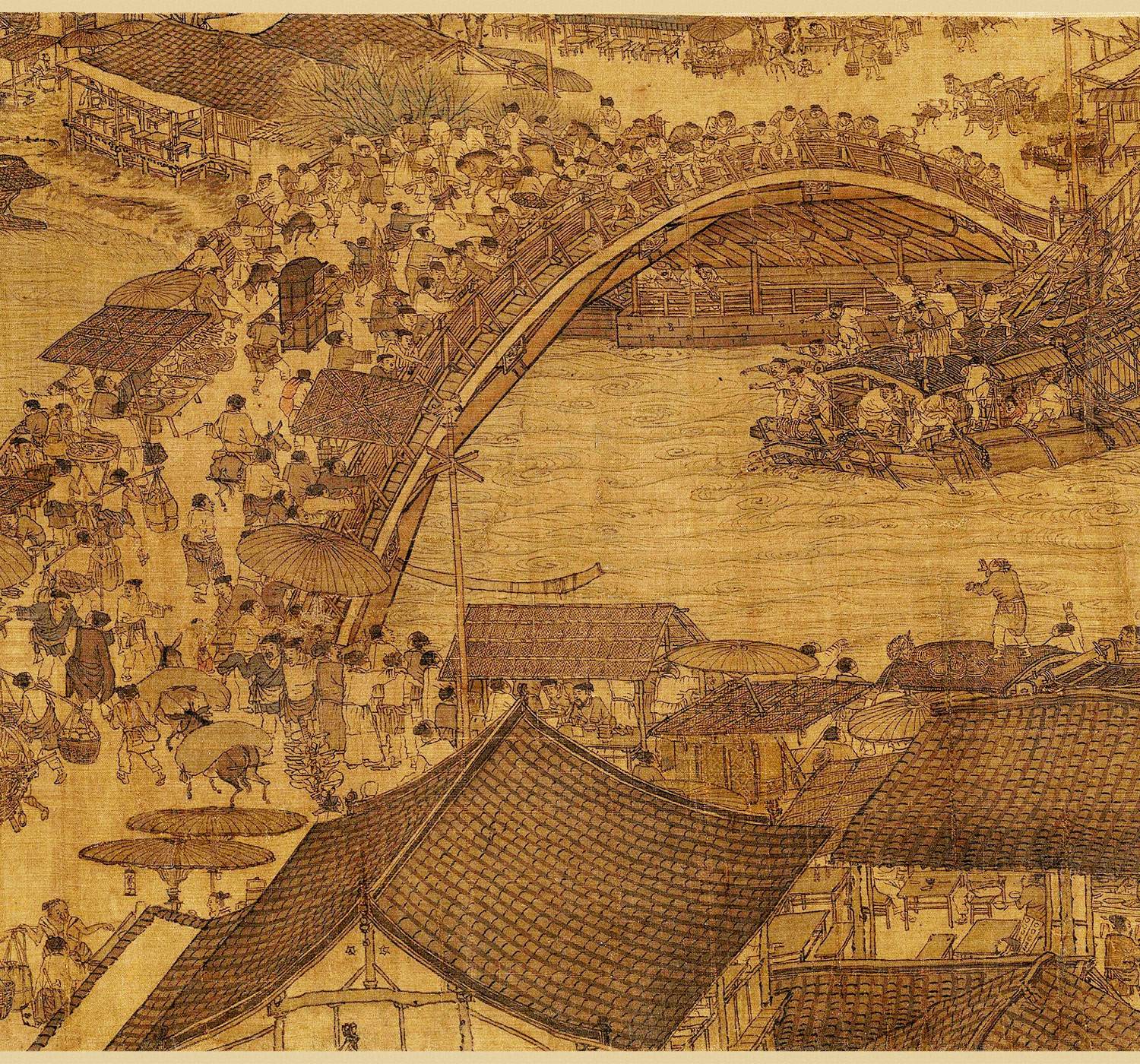Introduction to the “Along the River During the Qingming Festival”
“Along the River During the Qingming Festival” is a masterpiece of ancient Chinese painting and one of the most famous works in the history of Chinese art. This painting, created by Zhang Zeduan during the Northern Song Dynasty, provides a vivid glimpse into the life and culture of China in the 12th century.
Historical Background
The painting dates back to the Northern Song Dynasty (960–1127), a period of great economic prosperity and cultural achievement in Chinese history. The capital city of Bianjing (today’s Kaifeng) was one of the largest and most prosperous cities in the world at that time. Zhang Zeduan, a court painter, captured the essence of this vibrant city in his work. The painting was initially collected by Emperor Huizong of Song, who admired it greatly and inscribed the title in his distinctive “slender gold” script.
Artistic Features
“Along the River During the Qingming Festival” is a long scroll painting, measuring 24.8 centimeters in height and 528.7 centimeters in length. It is painted on silk with ink and light color. The artist employed a unique technique called “scattered perspective,” which allows the viewer to see multiple scenes and details in a continuous and harmonious manner. This technique gives the painting a sense of depth and movement, making it feel like a living scene.
The painting is divided into three main sections: the rural outskirts, the bustling river scene, and the busy city streets. It depicts over 800 figures, including merchants, laborers, scholars, and children, as well as numerous animals, boats, and buildings. Each character and object is meticulously detailed, showcasing Zhang Zeduan’s exceptional skill and attention to detail.
Cultural and Historical Value
This painting is not only a work of art but also a historical document. It provides valuable insights into the daily life, social structure, and economic activities of the Northern Song period. For example, it shows the various trades and professions of the time, such as boatmen, shopkeepers, and craftsmen. It also reflects the urban planning and architecture of Bianjing, with its narrow alleys, grand bridges, and bustling markets.
Moreover, the painting captures the essence of the Qingming Festival, a traditional Chinese holiday when people would visit their ancestors’ graves and enjoy the spring scenery. The festival was also a time for social gatherings and commercial activities, as depicted in the painting.
Influence and Legacy
“Along the River During the Qingming Festival” has had a profound influence on Chinese art and culture. Its popularity led to numerous copies and adaptations over the centuries, making it one of the most reproduced paintings in Chinese history. It has also inspired modern artists, filmmakers, and even theme parks, which recreate the scenes from the painting.
Today, the original painting is housed in the Palace Museum in Beijing, where it is considered a national treasure. It has been exhibited around the world, captivating audiences with its beauty and historical significance.
In conclusion, “Along the River During the Qingming Festival” is a timeless masterpiece that offers a unique window into the past. It combines artistic brilliance with historical depth, making it a true gem of Chinese cultural heritage.

